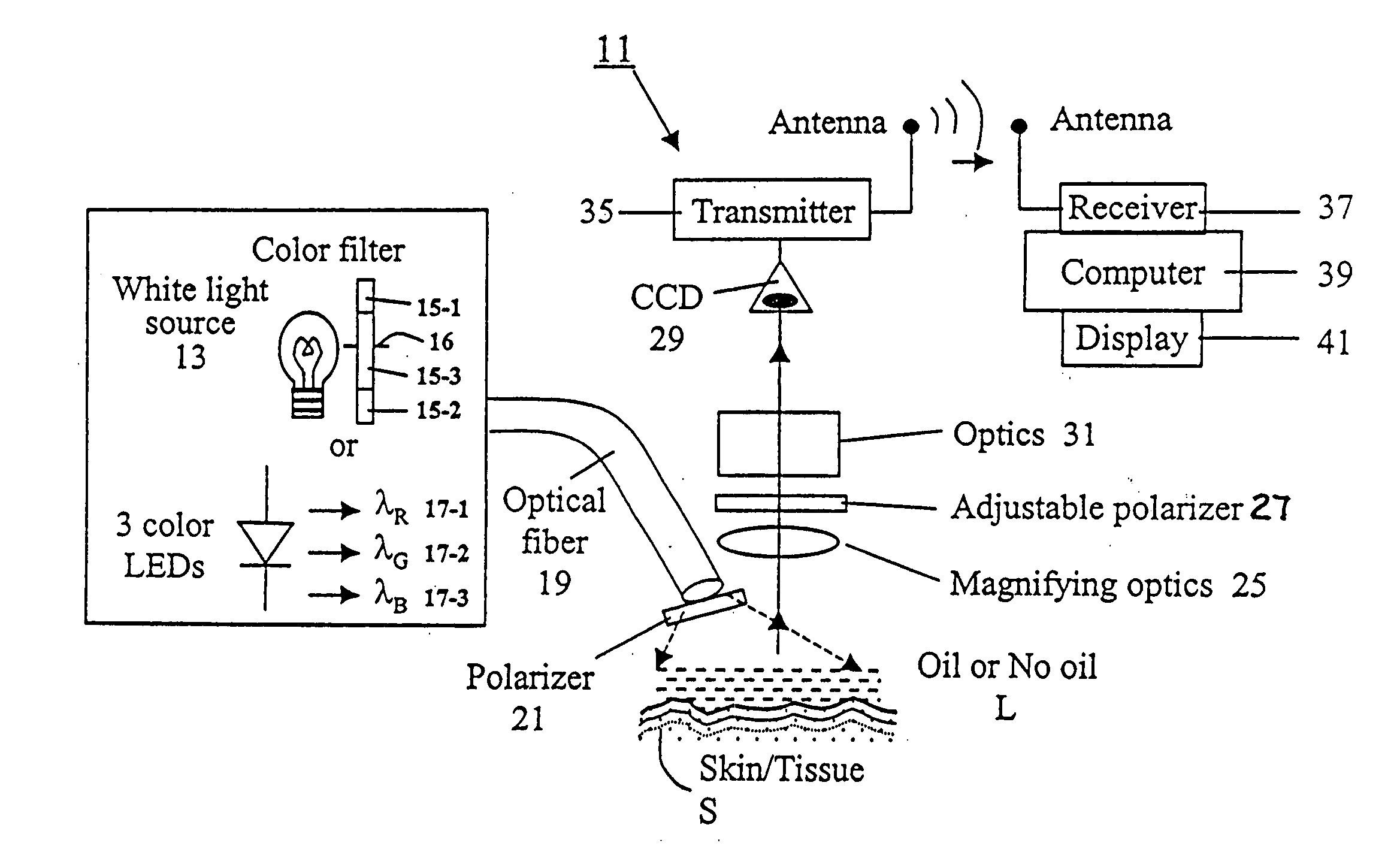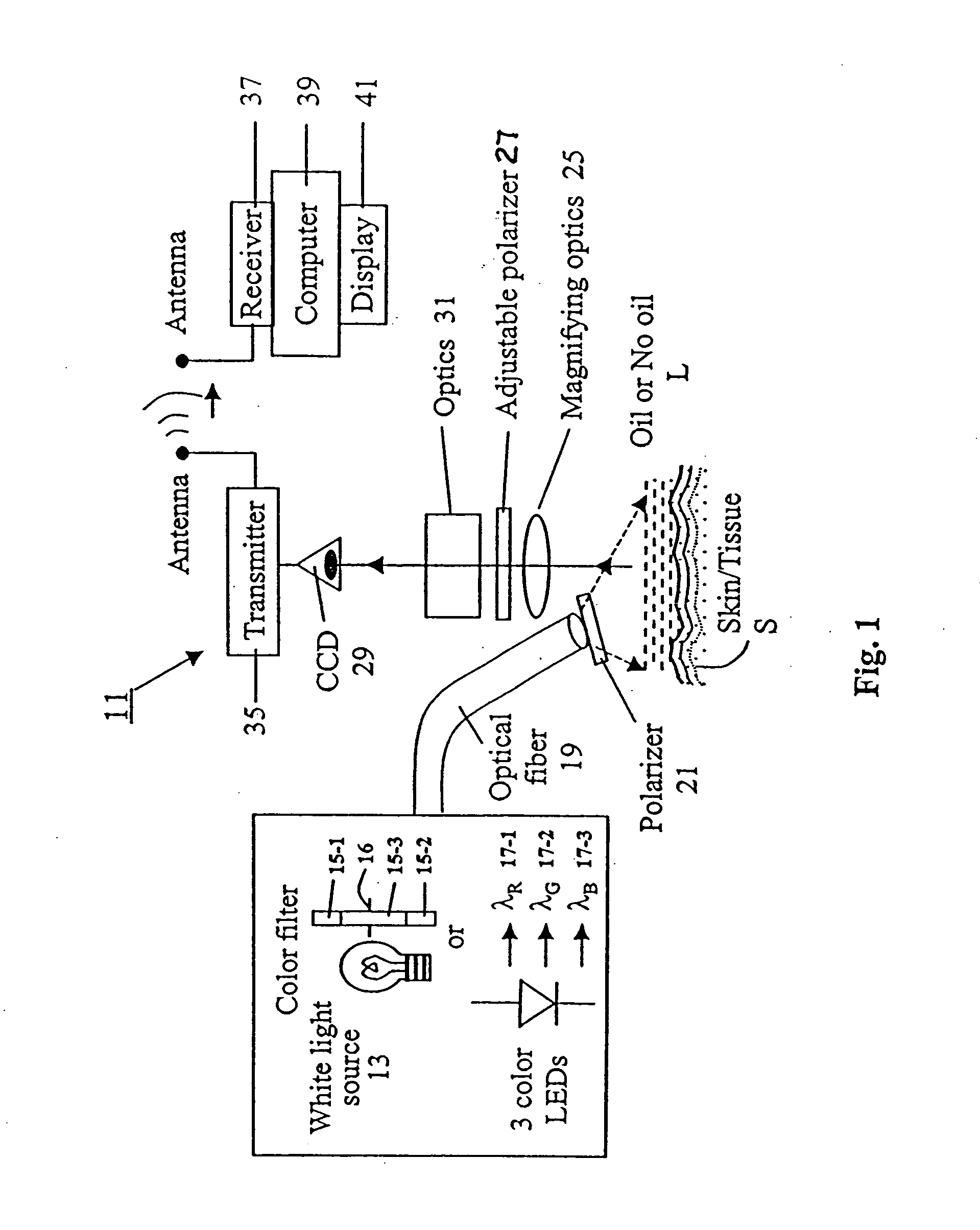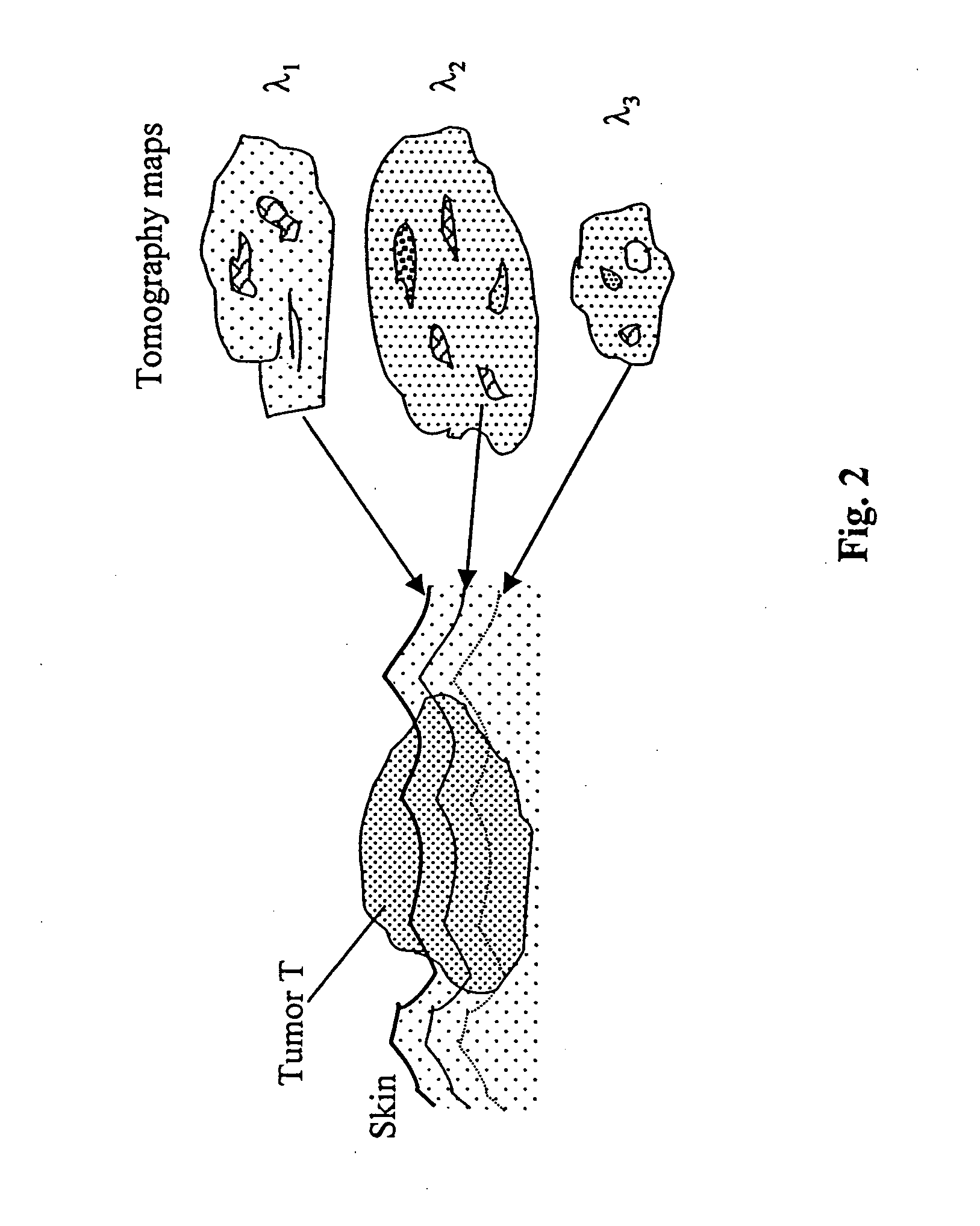Spectral polarizing tomographic dermatoscope
a dermatoscope and spectral polarization technology, applied in the field of skin, mucosa and cervical tissues, can solve the problems of obfuscating much of the subsurface structure of interest, lack of foresight and the ability to perform satisfactory self-examination, and poor preparation of non-dermatologist physicians to recognize and diagnose melanomas
- Summary
- Abstract
- Description
- Claims
- Application Information
AI Technical Summary
Benefits of technology
Problems solved by technology
Method used
Image
Examples
first embodiment
[0029]Referring now to FIG. 1, there is shown a schematic diagram of an apparatus constructed according to the teachings of the present invention for use in examining objects, said apparatus being represented generally by reference numeral 11. Apparatus 11 may be used, for example, to examine an object, such as skin, mucosa and cervical tissues for the purpose of detecting cancer and precancerous conditions therein or to examine a solid or structured object for the purpose of detecting defects therein.
[0030]Apparatus 11 comprises first illuminating means for illuminating an object with polarized light of a first wavelength. The light of a first wavelength may be in the ultraviolet, visible or near-infrared portions of the spectrum. In the present embodiment, said first illuminating means preferably comprises a white light source 13, such as a white light lamp emitting 2.5 mW, and a filter 15-1 selective for light of a first color. Filter 15-1 may be, for example, a narrow band filte...
second embodiment
[0038]Referring now to FIG. 3, there is shown a schematic diagram of an apparatus constructed according to the teachings of the present invention for use in examining objects, said apparatus being represented generally by reference numeral 51.
[0039]Apparatus 51 is similar in many respects to apparatus 11, the principal differences between the two apparatuses being that transmitter 35 and receiver 37 of apparatus 11 are replaced in apparatus 51 with a cable 53 coupled at one end to light detector 29 and at the other end to computer 39 for transmitting the output of detector 29 to computer 39. Apparatus 51 further includes a housing 55 for housing the other components of apparatus 51. Display 41, which may be, for example, an LCD unit, is mounted in an opening 57 provided in housing 55 so as to be viewable by an operator. The image information processed by computer 39 may be stored in computer 39 and / or may be stored on removable compact memory cards 60 removably mounted in computer 3...
third embodiment
[0040]Referring now to FIG. 4(a), there is shown a schematic diagram of an apparatus constructed according to the teachings of the present invention for use in examining objects, said apparatus being represented generally by reference numeral 101.
[0041]Apparatus 101, which is functionally similar in many respects to apparatus 11, includes a hand-held housing 103. Housing 103 is gun-shaped and includes a handle portion 105 and a barrel portion 107. The front end of barrel portion 107 is open, and a glass cover 109 is mounted therein. For reasons to be discussed below, a portion 108 of barrel portion 107 is expandable / retractable in the directions indicated by double headed arrow 110.
[0042]Apparatus 101 additionally comprises a red LED 111-1, a green LED 111-2, a blue LED 111-3, and a white LED 111-4, all of which are disposed within handle portion 105 of housing 103 and all of which are electrically connected to a battery 113 also disposed within handle portion 105 of housing 103. A ...
PUM
 Login to View More
Login to View More Abstract
Description
Claims
Application Information
 Login to View More
Login to View More - R&D
- Intellectual Property
- Life Sciences
- Materials
- Tech Scout
- Unparalleled Data Quality
- Higher Quality Content
- 60% Fewer Hallucinations
Browse by: Latest US Patents, China's latest patents, Technical Efficacy Thesaurus, Application Domain, Technology Topic, Popular Technical Reports.
© 2025 PatSnap. All rights reserved.Legal|Privacy policy|Modern Slavery Act Transparency Statement|Sitemap|About US| Contact US: help@patsnap.com



